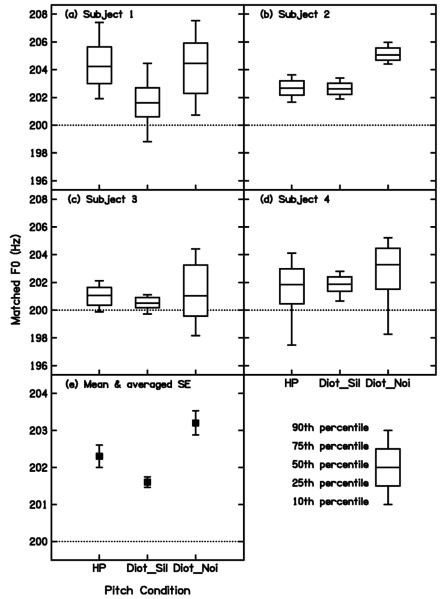FIG. 3.
Results of the pitch matching experiment (Exp.I). The matched F0 of a diotically presented harmonic tone complex containing harmonics 7-14 when its pitch was perceived equal to that of a target complex tone, “containing harmonics 2-5” of an F0 of 200 Hz. The target complex could be either a complex Huggins Pitch (condition “HP”) containing phase transitions centered on the frequencies corresponding to the harmonics, or a harmonic tone complex presented diotically in quiet (condition “Diot_Sil”), or a harmonic tone complex presented diotically in the same noise as used for generating the HP, at a level so that the tone complex is perceived equally loud as the tonal part of the complex HP stimulus (condition “Diot_Noi”). Figures 1(a)-1(d) show, for each of the four subjects, the 90th, 75th, 50th, 25th and 10th percentiles of the distribution of the pitch matches in each of the three conditions. Figure 1(e) shows the mean of the pitch matches and the size of the “typical standard error”, i.e., the mean of the standard errors calculated initially separately for each subject and condition.

